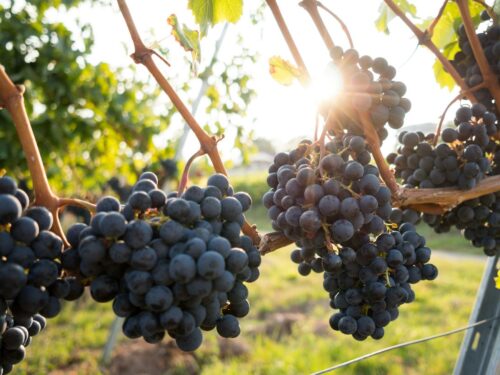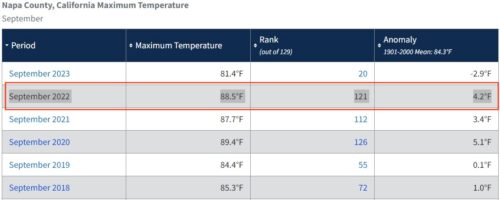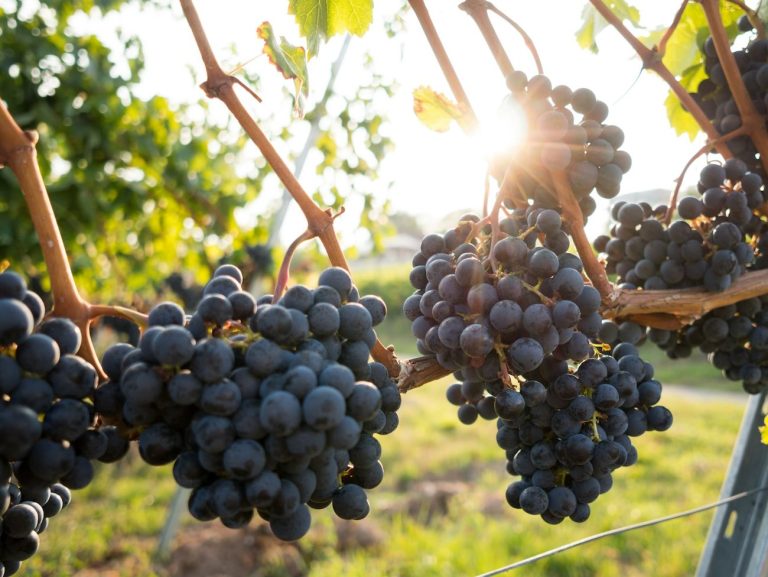

A report published by National Public Radio (NPR) on September 9 asked: Can America's favorite red wine withstand climate change? The answer is yes, even though the story wrongly suggests the opposite. [emphasis, links added]
Data suggests Napa Valley grapes have experienced hotter temperatures in the pasteven though global warming has been going on for more than 30 years, Grape production increased in the region.
Here are some excerpts from the article:
But increasingly severe heat waves are taking their toll on grape varieties, especially during late summer ripening. As temperatures continue to rise, the wine industry is slowly facing a future in which Napa may not be the premier Cabernet Sauvignon region it once was.
…
The vineyard is already located in the hottest northern end of Napa Valley, but the extreme heat in recent years has sounded the alarm. A late summer heat wave in 2022 brought temperatures in the vineyards to just under 120 degrees, she said.
“When it gets that hot, the vines are done,” she said. “They will go into hibernation and when that happens, they will no longer mature.”
First, Author Lauren Sommer conflates short-term heat waves with long-term climate change.
Second, according to temperature records, although Napa Valley set a new high temperature record of 114°F on September 6, 2022, it was only one degree higher than the previous global high temperature record of 113°F set in 61 years. warm.
A difference of 1 degree in a day over 61 years does not represent climate change, but simply natural weather variation. Weather and climate operate on different schedules.
Figure 1 below, produced by the National Oceanic and Atmospheric Administration (NOAA), shows the monthly average high temperatures in September.
Napa County has experienced many hot Septembers in its history. Some are even higher than the average for the entire month of September 2022:


Note that many past Septembers have had average monthly temperatures greater than or equal to September 2022.
In a chart provided by NOAA, they show that September 2022 was not unusual at all, with the highest temperature ranking 121st out of 129 years, indicating that the previous 8 Septembers were hotter:


In addition, red grape yield data shows that production has not been affected by recent temperatures.
Figure 3 tracks California grape production, with Napa in green, and shows steady growth in harvested tons, not just in the Napa region, but across all regions:


If long-term climate change were detrimental to wine grape production, it would certainly show up in the data in Figure 3, but this is not the case.
Climate change does not come in the form of single-day high temperatures, as NPR confuses it. It comes in the form of a sustained increase over time.
The data suggests that NPR's Lauren Sommer may have had too much to drink while writing this story, or, more likely, She didn’t look into actual temperature and grape yield data before starting to write a story about how everything is bad because of climate change.;Choose her anecdotes to fit the narrative.
We could add this under-researched story to dozens of similar ones climate realism Blame the media for erroneous or selective reporting.
Wine grapes can and have withstood climate change, and the media is just spreading baseless horror stories.
NPR's coverage of grapes seems more of an expression of the “sour grapes” of many alarming climate scare stories being debunked than factual reporting on any of the dangers facing grapes and wine production.
Popular photo on Unsplash by David Köhler
Read more Climate Realism
